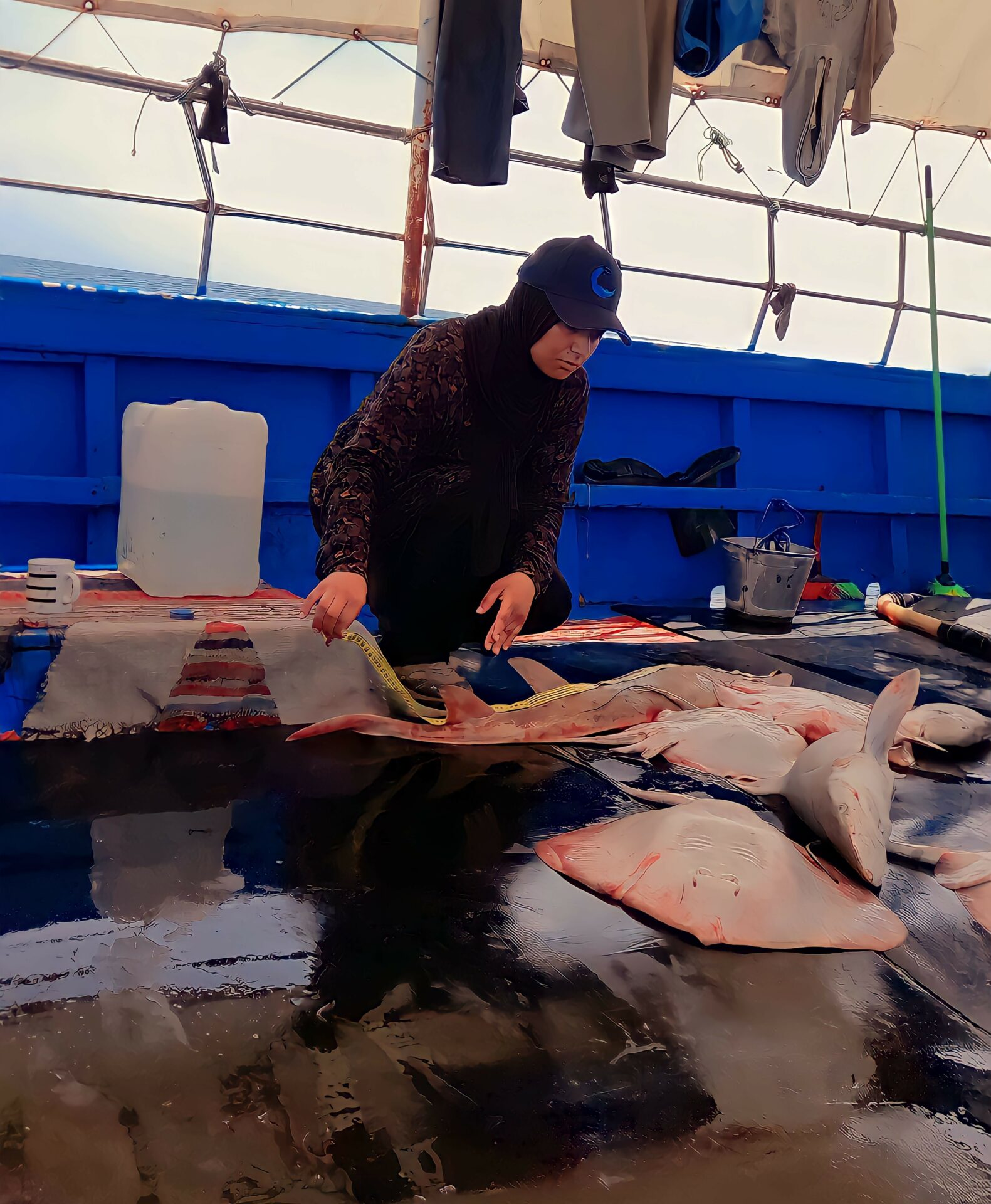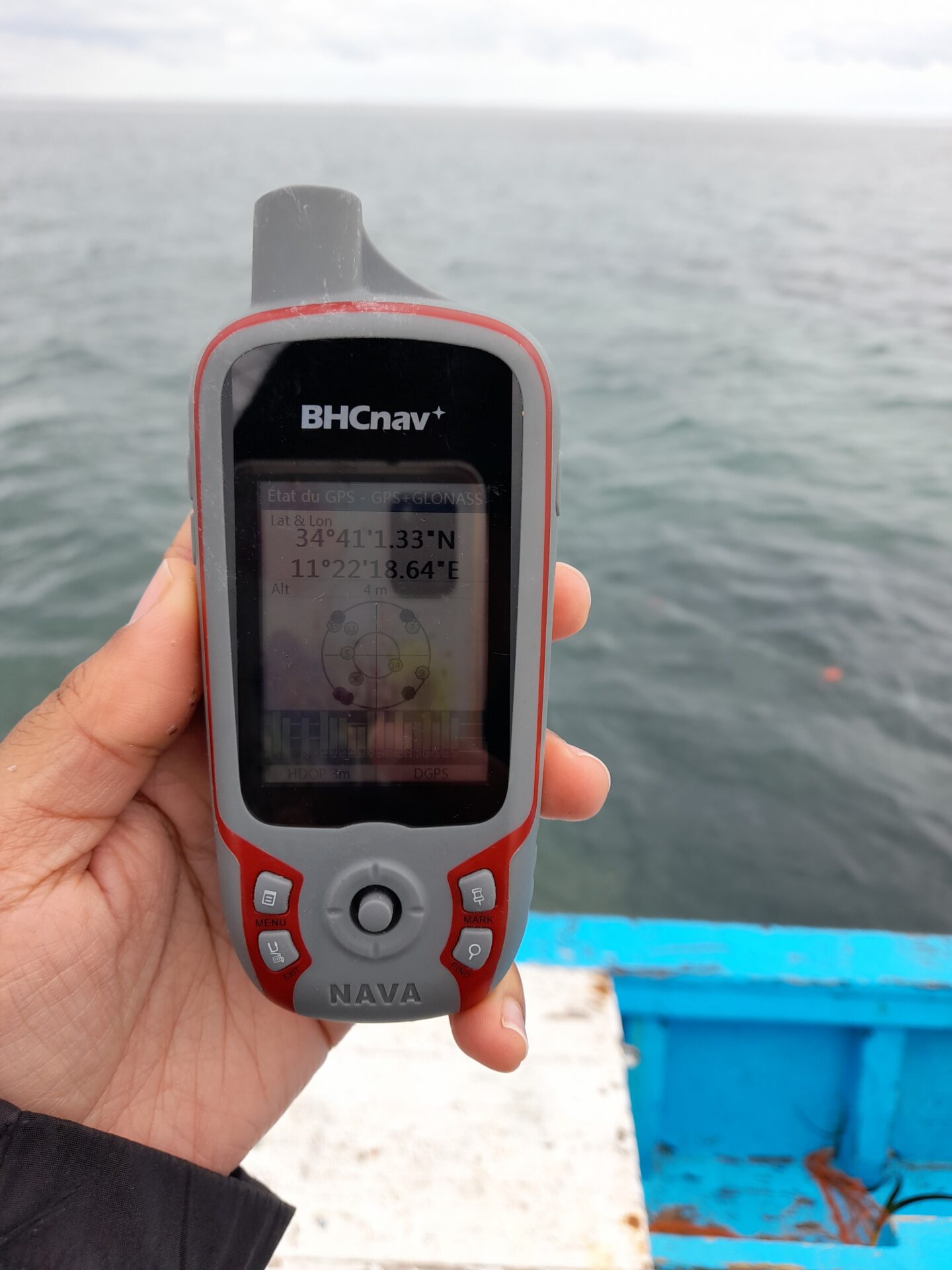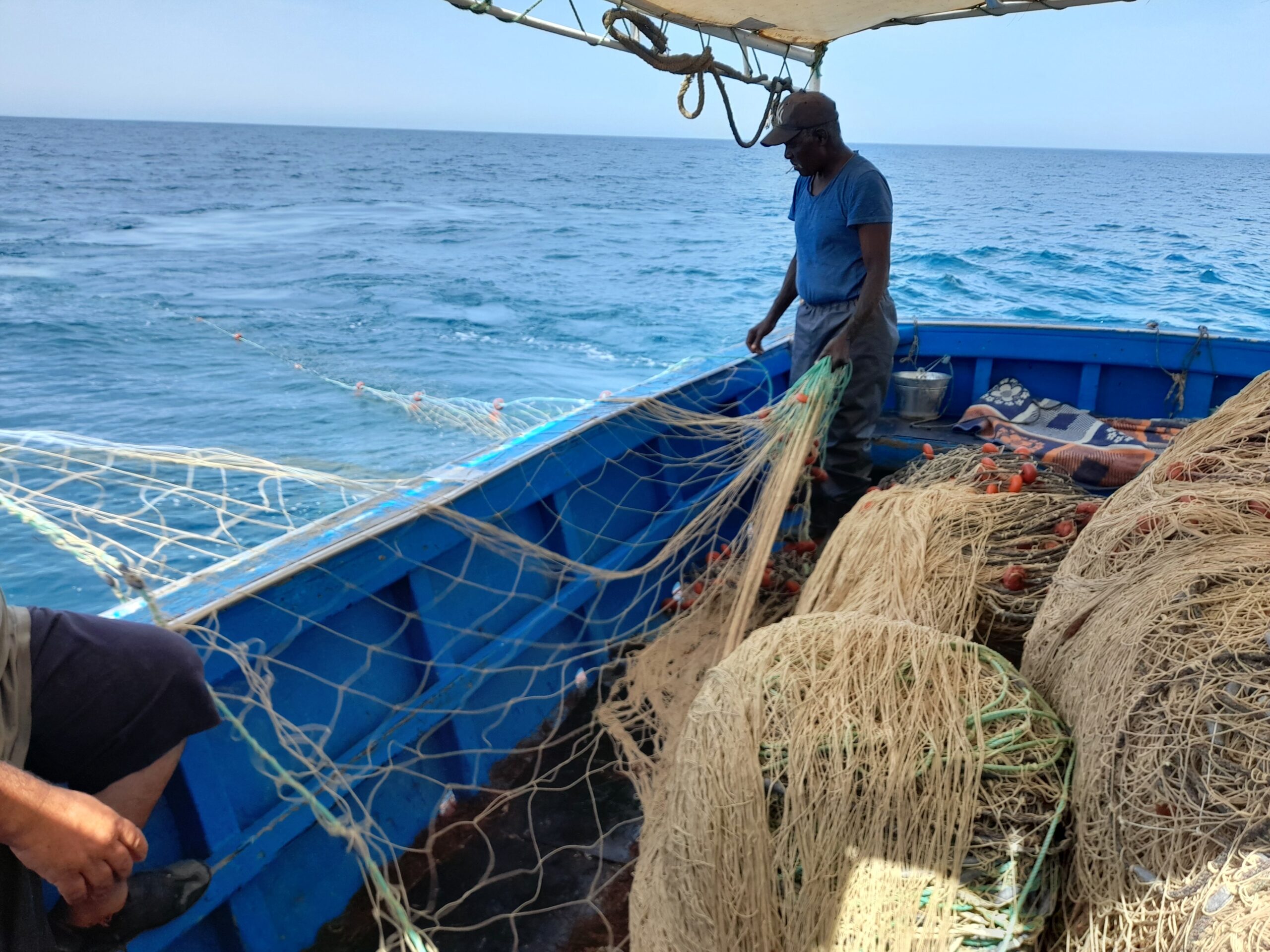Elasmobranch fisheries surveys and mitigation measures
Our investigations showed that, in the study area, several elasmobranch species were targeted by different fishing gears during Spring and Summer:
- Gillnets, locally known as Garracia/Kallabia are active from March to August.
- Gillnets, locally known as Gattatia are active from February to August.
- Pelagic longlines are active mainly in July and August.
During the spring and summer of 2023, we have conducted onboard observations to collect more robust and accurate information about catch composition, size, maturity stage and geographical position of catches, and the fishing effort of each gear.


Onboard observations and Taking measurements of catches. Photo © Rihab Louhichi
The next step was to test the effect of depth/time in catches. These tests aim to examine the effect of the depth/time on the catch of fragile maturity stages (new borns, pregnant females, etc), which occurred during June, July, and August. During this period, we collaborated with fishermen to evaluate some fishing depths. The fishing positions were carefully chosen to compare the CPUE (Capture Per Unit of Fishing gear) values of each depth interval.

Testing of the time/depth relationship. Photo © Rihab Louhichi
During the sea trips, we tried to visit as many ports as possible. Indeed, the shark fishing activity is conducted simultaneously on all ports. Then, the surveys need more than one observer to cover all the regions. For better time management, we also prepared a schedule for sea trips that depended on the weather and the availability of vessels.
The data collected during onboard observations will be used to determinate the distribution of each species according to maturity stage, CPUE and capture period, using a geographic information system, ArcGIS.
Maps of sensitive areas will be prepared and used as the main tool to raise awareness and propose a conservation strategy.
